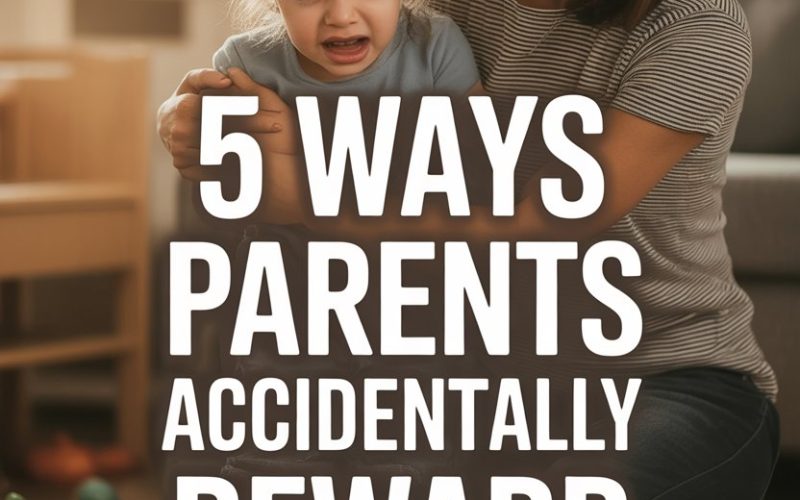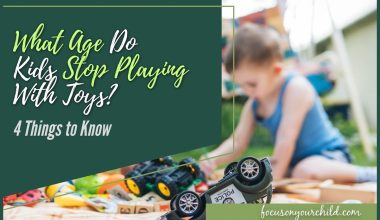Been there, wiped that. If you’re raising small humans, odds are you’ve seen a meltdown (or twenty) this week alone.
One minute you’re slicing their toast into triangles, and the next—howls of betrayal echo through the house. If only there were Olympic medals for surviving public tantrums, right?
Most parents would do anything to stop the wailing, but sometimes our best intentions make things a whole lot harder tomorrow.
Here’s how parents (yes, even the super patient, organic-snack-packing ones) can accidentally reinforce meltdowns—and what can help instead.
1. Giving In to Demands on the Spot
Picture this: Your little one is sprawled in aisle three, inconsolable over a packet of biscuits. The quickest way to restore supermarket peace? Hand over the biscuits. Problem solved.
Except, not really.
Experts from the CDC explain that giving in to tantrums teaches children, faster than you can say “two-for-one special,” that meltdowns are a surefire route to getting what they want.
Once they connect the dots, they’ll test that strategy every chance they get. Who wouldn’t?
Instead, try to keep your best poker face. Calmly acknowledge their feelings (“You really wanted those biscuits, huh?”), and stick to your guns.
The first few times will be rough. Possibly legendary. Power through, and next time, there’s a much slimmer chance you’ll be mopping up tears next to the canned beans.
2. Offering Distractions as a Rescue Mission
You hear the pitch rising, and without missing a beat, your phone is out, Peppa Pig is on, and you’re waving snacks like a magician. If you’ve ever handed over your mobile to head off a meltdown, you’re in good company.
Here’s the wrinkle: While distraction is a classic parenting tactic, overusing it (especially tech-based ones) can teach kids that a tantrum means they get extra attention, screens, or treats.
According to this piece from the Child Mind Institute, kids can quickly spot when parents are scrambling to soothe them with goodies. Cue the next meltdown, and they’ll be ready.
A better way? Support them through the storm, and offer comfort without the bells and whistles.
Sometimes a cuddle or simply sitting quietly nearby does more for long-term calm than another round of cartoons. Admittedly less convenient for grocery shopping, but hey, no one said this job was easy.
3. Negotiating and Reasoning During the Meltdown
Middle of a screaming fit, and suddenly you’re hosting a TED Talk on Why We Can’t Eat Gummy Bears for Dinner.
Maybe you’re sweet-talking, maybe you’re offering bribes—anything to restore the peace. (Who among us hasn’t promised an extra bedtime story in a moment of weakness?)
Research highlighted by Zero to Three points out that reasoning with a child mid-meltdown rarely works. Their brains are busy doing somersaults in the emotional deep end—not exactly open to logic.
Turns out, negotiating during a meltdown can encourage kids to “argue” their case, loudly and repeatedly, until you cave. (Or until the neighbours start leaving sympathy cards.)
Hold off on the explaining and problem-solving until calm returns. Reserve the bargaining for hostage negotiators and reality TV.
4. Showering Attention on the Drama
Sometimes the show isn’t about the prize itself, but the audience’s reaction.
If every outburst gets a full parental performance—rushing, fussing, endless explanations, or even shouting—kids notice. Negative attention is still attention.
An article from Raising Children Network shares that children crave connection, and sometimes meltdowns are just a creative attempt to get it.
When parents respond dramatically, it can make those tactics more appealing.
A surprisingly effective fix? Offer plenty of attention for the behaviour you want to see.
Cheer on those moments of sharing, listening, or even a tiny act of self-soothing. When the tears flow, try to keep your response calm, brief, and neutral. (Think BBC newsreader, not West End actor.)
5. Predicting Triggers and Preemptively Surrendering
You know the drill. The mere mention of “time to leave the park” makes your child transform into a puddle on the play structure.
To avoid the chaos, you start skipping the park altogether, or you let them play longer every time, hoping to skirt the meltdown.
While this feels like self-preservation, preemptively giving in to avoid a tantrum teaches kids that certain triggers work.
Those who study child behaviour, like the folks at the American Academy of Pediatrics, caution that avoiding all possible triggers can cement their power.
Instead, prepare for transitions with a heads-up (“Five more minutes, then it’s home for tea!”) and keep boundaries predictable.
A little advance warning, paired with a consistent follow-through, helps kids learn that some things aren’t up for negotiation—even if there are tears.
Meltdown Recovery: Your Secret Weapon
No parent is perfect, and let’s be honest, sometimes you just want to get through the checkout line without becoming a viral TikTok. That’s more than fair.
The trick isn’t to eliminate every meltdown (good luck with that!) but to help your child learn calmer ways to cope.
After the storm passes, a moment of reconnection works wonders: “That was tough, wasn’t it? You were upset, but now we’re cuddling. I’m proud of you for calming down.”
This helps reinforce that good things happen when emotions settle—plus it keeps your bond strong, even if lunch was triangular toast and tears.
Hang in there. The tantrum years will end eventually.
And until then, you’ve got a toolkit (and perhaps a very strong cup of coffee) to see you through.





